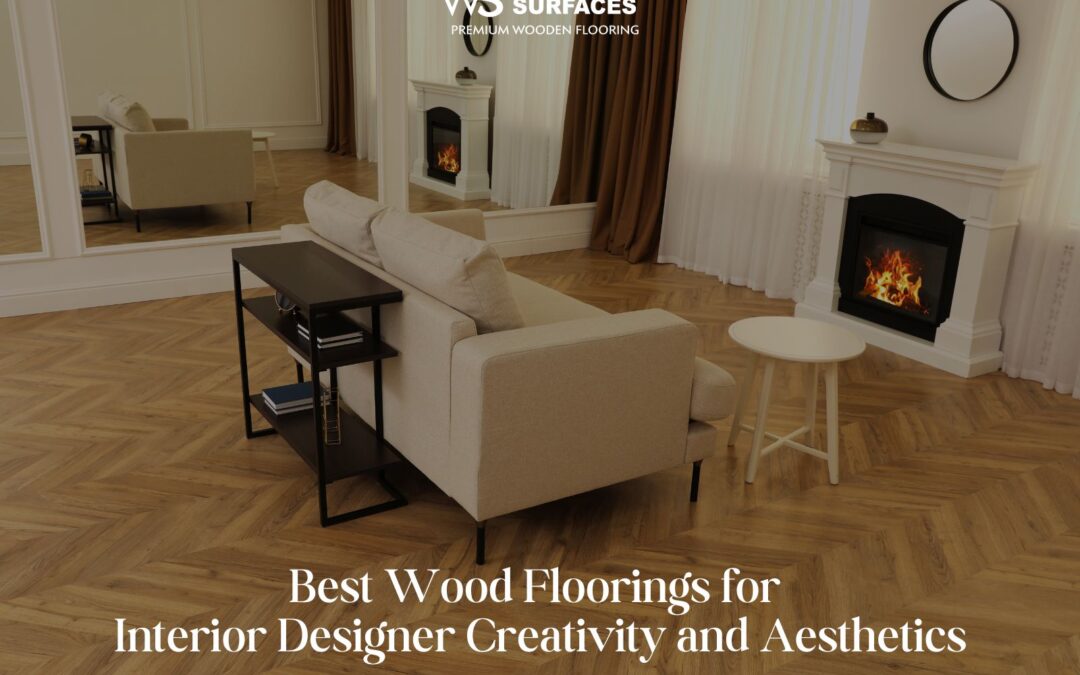Wood flooring has long been celebrated as a classic choice for interiors, offering warmth, elegance, and versatility. However, in today’s rapidly evolving interior design landscape, wood flooring has become far more than just a backdrop—it is a key instrument for designers to express creativity and elevate aesthetics. For interior designers, choosing the best wood flooring for interior designers are not merely about functionality; it’s about setting the tone, mood, and character of a space.
Merging Functionality with Creativity
Interior design is a delicate balance of form and function. Wood floors are inherently functional, providing durability, comfort, and ease of maintenance, but they also offer infinite possibilities for creativity. Designers are increasingly exploring textures, patterns, and finishes that go beyond traditional plank layouts. For instance, chevron and herringbone patterns have resurged in popularity, offering dynamic geometry that transforms ordinary rooms into visually striking spaces.
Incorporating innovative flooring solutions for interiors allows designers to blur the line between furniture and floor. Layered wood finishes, mixed-width planks, and alternating tones can create depth and movement, giving each room a narrative quality. A living room with mixed hardwood shades can evoke a story of sophistication and casual elegance, while a sleek, uniform plank layout can convey minimalism and modernity.
Emphasizing Aesthetic Versatility
A significant advantage of wood flooring is its aesthetic versatility. It complements almost every interior style—from traditional and rustic to modern and industrial. Designers seeking stylish flooring ideas for interiors often combine wood with other materials, such as stone, metal, or glass, creating contrast and intrigue. For instance, a wooden floor with subtle inlays of metal strips or marble borders can turn a simple corridor into a design statement.
Another emerging trend is the use of engineered wood. Its layered construction allows for better stability and adaptability to challenging spaces such as basements or areas with high humidity. For interior designers, engineered wood offers a palette of grains, finishes, and plank sizes to explore. When paired with bold wall colors or statement furniture, the right wood flooring can enhance spatial perception, making rooms feel larger, cozier, or more intimate depending on the design intent.
Exploring Textures and Finishes
Texture is an often-overlooked element in flooring design, yet it is vital for adding sensory depth to interiors. Interior designers increasingly experiment with brushed, hand-scraped, or distressed wood finishes to introduce tactile interest. These textures not only appeal visually but also engage touch, creating a multi-sensory experience for occupants.
A matte finish, for example, can bring understated sophistication to a space, absorbing light and reducing glare. Conversely, a semi-gloss or polished finish can reflect light, making rooms appear brighter and more spacious. Designers can even combine different finishes in open-plan layouts to subtly demarcate functional zones, such as living and dining areas, without the need for physical partitions.
Sustainable Choices and Design Innovation
Sustainability has become an integral consideration in interior design. Many designers now prioritize responsibly sourced or reclaimed wood to reduce environmental impact while maintaining aesthetic appeal. Reclaimed wood, with its inherent character and patina, allows designers to craft spaces that tell a story—every knot and grain pattern becomes a conversation starter. Using eco-friendly finishes and adhesives further supports sustainability without compromising on design quality.
Moreover, technological advancements have expanded the possibilities for innovative flooring solutions for interiors. Modern wood flooring can now incorporate acoustic insulation, underfloor heating compatibility, and high-resilience coatings for long-lasting beauty. These features allow designers to meet functional requirements while pushing creative boundaries, proving that practicality and artistry can coexist seamlessly.
Personalizing Spaces Through Wood Flooring
Wooden flooring offers unmatched flexibility to adapt to the designer’s vision and the client’s lifestyle. Interior designers often tailor flooring choices to complement artwork, furniture, or architectural elements. For example, darker walnut tones can create a dramatic backdrop for lighter furniture, while pale oak planks can enhance airy, minimalist interiors.
Layering and zoning are additional strategies that leverage wood flooring creatively. By using different wood tones or patterns within a single space, designers can guide movement, define functional areas, and create focal points. A strategically placed geometric pattern can act as a visual anchor, drawing attention to a centerpiece or delineating pathways in open-plan homes or commercial spaces.
Inspiring Trends for Designers
Several trends are shaping the future of wood flooring in interior design:
- Wide Planks: Wide planks create a sense of spaciousness and continuity, ideal for modern, open layouts.
- Two-Tone Floors: Alternating shades or grain patterns add dynamism and depth.
- Mixed Materials: Wood combined with terrazzo, stone, or resin for unique surface textures.
- Artistic Inlays: Incorporating custom patterns or motifs that echo architectural features.
- Vintage and Reclaimed Styles: Adding character and history to new constructions.
By exploring these trends, interior designers can elevate ordinary spaces into extraordinary experiences, using flooring not just as a foundation but as a defining design element.
Conclusion
For interior designers, selecting the best wood floorings for interior are an opportunity to marry creativity, functionality, and aesthetics. From experimenting with textures, patterns, and finishes to embracing sustainable and innovative options, wood flooring remains a versatile canvas for design expression. Whether the goal is a serene retreat, a vibrant social hub, or a luxurious workspace, the right wood flooring can set the tone, amplify style, and enhance spatial storytelling. In an era where interiors are more than just spaces—they are experiences—wood flooring emerges as a pivotal tool, empowering designers to bring their visions to life with elegance, originality, and artistry.
Embracing these stylish flooring ideas for interiors and innovative flooring solutions for interiors allows designers to push boundaries, craft unique environments, and inspire those who inhabit them, ensuring that every floor tells a story.

